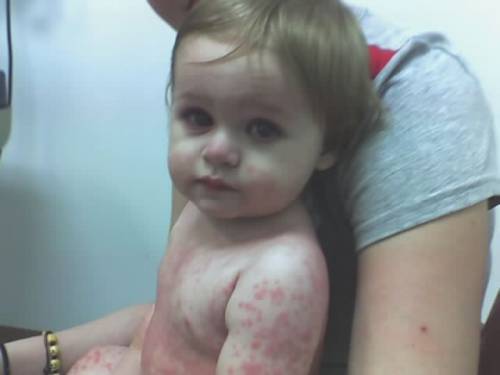Kawasaki disease - in children - symptoms and treatment

What is Kawasaki disease
Kawasaki disease is an acute condition affecting children that can weaken the CORONARY ARTERIES and other cardiovascular structures, resulting in HEART ATTACK, ANEURYSM, or permanent damage. Kawasaki disease, also called mucocutaneous LYMPH NODE syndrome, comes on suddenly with RASH, FEVER, CONJUNCTIVITIS, and swollen lymph nodes (LYMPHADENOPATHY).
Symptoms of Kawasaki disease
The characteristic symptom that raises suspicion the condition is more than a typical viral INFECTION is the bright red color of the lips and mucous membranes in the MOUTH. After about five days the palms of the hands and soles of the feet also become bright red. The child appears, and is, very ill. The acute phase of the disease runs about three weeks. The diagnostic path is primarily clinical; there are no definitive tests for Kawasaki disease.
Kawasaki disease Treatment
Treatment during the acute phase includes efforts to keep the child comfortable as well as administering high-DOSE aspirin. Aspirin, not usually given to children who have fevers because of the risk for REYE’S SYNDROME, is the treatment of choice for Kawasaki disease because it not only reduces FEVER but also reduces cardiovascular INFLAMMATION and has antiplatelet action that helps prevent blood clots from forming. These effects lower the likelihood of cardiovascular damage or crisis. Intravenous IMMUNOGLOBULIN, which delivers generalized antibodies that aid the body’s IMMUNE RESPONSE, given early in the course of the disease seems to mitigate symptoms in some children.
Sometimes cardiovascular symptoms manifest during the disease’s acute phase, though typically it is months to years later that problems become apparent. Doctors recommend cardiovascular assessment, including ELECTROCARDIOGRAM (ECG) and ECHOCARDIOGRAM, for children at the time of diagnosis. Detected cardiovascular changes require regular followup, with treatment as necessary. The most serious long-term consequences of Kawasaki disease are aneurysms of the coronary arteries that cause heart attack. In some children, inflammation attacks the heart valves, resulting in VALVULAR HEART DISEASE that requires ongoing medical attention and sometimes heart valve replacement in adulthood.
Doctors believe an infectious agent, such as a VIRUS, likely causes Kawasaki disease though as yet researchers have been unable to isolate it. Though occasionally there appear to be clusters of Kawasaki disease, the condition does not appear to be contagious through contact among family members and close contacts. Children under five years of age are most likely to develop Kawasaki disease. Children who have had Kawasaki disease rarely get it again.
See also ANTIBODY; SCARLET FEVER; TOXIC SHOCK SYNDROME.
Open discussion on the topic Kawasaki disease - in children - symptoms and treatment
Similar interests
- Casino Non Aams
- Nuovi Casino
- Casinos Not On Gamstop
- UK Casinos Not On Gamstop
- Casinos Not On Gamstop
- UK Casinos Not On Gamstop
- Casino Non Aams Italia
- Slot Sites Not On Gamstop
- Meilleur Casino En Ligne
- Non Gamstop Casino Sites UK
- Meilleur Casino En Ligne
- Casino En Ligne France
- Best Non Gamstop Casinos
- Casinos Not On Gamstop
- UK Casino Not On Gamstop
- Casinos Not Signed Up To Gamstop
- Best Slot Sites UK
- Non Gamstop Casino Sites UK
- Online Casinos Nederland
- Online Casinos Nederland
- Casinos Not On Gamstop
- Best New Uk Casinos Not On Gamstop
- Casino Non Aams
- Non Gamstop Casinos UK
- Migliori Siti Casino Non Aams
- Bitcoin Casinos
- Sites De Paris Sportifs Belgique
- Bookmaker Non Aams
- Casino En Ligne
- Casino Nouveau En Ligne